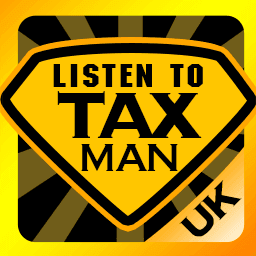The Lesser-Known Tax Changes That Might Impact You
*Please note the information in this article may be out of date
Following the start of a new tax year, it’s always useful to stay abreast of changes to your responsibility. Certain legislative updates in 2019 have been overshadowed by the spectre of Making Tax Digital for VAT, causing smaller (but significant) changes to be overlooked.
Mon, 24 Jun 2019While these developments may not have as drastic an effect on your accounting process, they could impact your earnings or operation.
To help preserve your personal finances or gain a better understanding of your contribution, Mike Parkes, our Self-Assessment Expert, one of the brains behind the tax app GoSimpleTax, has written this guide on the lesser-known tax changes of this year.
Personal Allowance has increased to £12,500
Over 30 million people are set to benefit from the increase to Personal Allowance. The tax-free sum has risen from £11,850 to £12,500 – netting the typical basic-rate taxpayer an additional £130 more.
According to Chancellor Philip Hammond, this move is in line with the rise in consumer price inflation and will particularly reward the self-employed. The basic rate tax band has also changed – to £12,501-£50,000 in taxable income. This means that you will need to earn more than £50,000 (up to £37,500 after allowances have been deducted) before you start paying tax at the higher rate of 40%.
The National Living Wage has increased to £8.21
The National Living Wage came into effect on 1st April 2016. It was created to meet the needs of citizens aged 25 and over by paying them an increased wage above the National Minimum Wage.
Provided you aren’t in your first year of an apprenticeship, you will see your wage increase to £8.21 an hour. While 2.4 million people are set to benefit, there has been less applause from SMEs, especially where their business relies on a low-paid workforce.
There are fears that such increases are putting pressure on employers. In 2016, the British Retail Consortium lobby predicted that UK retailers will have to find £3 billion a year by 2020 to handle increases to the National Living Wage. If you employ staff, ensure that you can afford the rise in pay.
Business rates relief to provide third off bills
However, it’s not all bad for small businesses. As part of a £13 billion rates relief scheme from 2016, those who qualify as a ‘small retailer’ will get one third off their business rates bills.
Specifically, your business will only qualify for small business rate relief if your property’s rateable value is less than £15,000 or if your organisation only uses one property. When you get a second property, you’ll keep receiving existing relief on your main property for 12 months.
Provided you meet the criteria, you won’t pay business rates on a property with a rateable value of £12,000 or less. If your rateable value is between £12,001 and £15,000, the rate of relief will go down gradually from 100% to 0%.
New Enterprise Allowance has been extended
The New Enterprise Allowance (NEA) is a government scheme that provides growth advice and funding for benefit claimants. The initiative is designed to help entrepreneurs and fledgling freelancers get their ideas up and running.
Since 2011, the scheme has been credited with supporting 120,000 businesses. The government has recognised the project’s success and confirmed it will be continuing for another two years from April 2019 – with 30,000 spaces available.
If you’re 18 and have a feasible business plan, you could be entitled to a weekly allowance worth up to £1,274 over 26 weeks. However, this has caught the ire of some individuals, highlighting how the NEA payment offers a quarter less than what Jobseeker’s Allowance provides.
Do I Need To Make A Second Payment On Account?
For the uninitiated, you may be wondering what a ‘second payment on account’ is. If you’re a freelancer or have any earnings outside of PAYE, you may need to make two advance payments on account towards your current year’s tax bill.
As most of you will be aware, the date of the first payment on account is 31st January – which is also the deadline for your Self Assessment. However, without the buzz of tax conversation, the summer deadline is considerably less observed and can catch out even the most diligent of taxpayers.
Not everyone will need to make payments on account, but with the 31st July deadline fast approaching, it’s best to be certain well before the due date. To clarify, Mike Parkes from GoSimpleTax has provided an overview on your responsibilities.
What is a second payment on account?
For those who are required to make payments on account, your estimated tax liability for the year ahead is split into two in order to make the payment easier to manage. For example, if your tax bill for 2017/18 was £5,000, then HMRC will require two payments on account of £2,500 each to go towards the 2018/19 tax year. The first will be due on the 31st January 2019, and the second on the 31st July 2019.
You will only be required to make payments on account if your Self Assessment bill was above £1,000. Although, if over 80% of your annual tax bill is deducted at source (from employment for example), you are also exempt from making payments on account. For instance, you may have a total tax bill of £10,000 for 2017/18, £8,200 of which is paid via your salary – so you just need to make one payment of £1,800 in January, and not any payments on account (as 82% of your tax is paid at source, through your salary).
How is it calculated?
It’s important to remember that payments on account are based on your earnings from the previous year. This means that, should your income dramatically fall, your payments on account may be reduced to reflect a lower income. You can therefore make a claim to reduce your payments on account. Be careful though: reduce them too much and you can incur an interest charge on any tax shortfall.
While the opposite applies if your income increases (as this will result in a ‘balancing payment’ on 31st January of any shortfall from your two payments on account), it’s important to be aware of these hidden costs and be alert to the consequences of any significant changes to your earnings.
If you’re struggling to find the relevant information to make your second payment on account, check any HMRC correspondence you’ve received. They should have written to you following your January payment, including further details on how to pay in the summer.
What if I can’t afford it?
Contact HMRC well before the 31st July if you’re concerned you can’t make payment. They may be able to arrange a payment plan. Should you miss the deadline without informing them, you’ll start to accrue interest and penalties.
HMRC are particularly stern with on account payments. If you haven’t paid off the tax by the following January, you can be expected to pay 5% of the total charge along with the accrued interest. Ultimately, be sure to stay aware of your responsibility throughout the year to avoid any hidden costs and being charged further.
Written by Mike Parkes, Self-Assessment Expert and brains behind successful tax app - GoSimpleTax
Mike now writes articles and guides for Listentotaxman. His day job sees him leading the development of the successful Self Assessment app – GoSimpleTax. Listentotaxman is a big fan of GoSimpleTax. We’ve found it to be perhaps the easiest way to calculate and submit a tax return. It’s very user friendly – highlighting the allowances you can claim against. We recommend just trying for free initially within their 14 days trial period to see how you get along.

 Our Favourite Tax App?
Our Favourite Tax App?
It's Simple
ListenToTaxman has teamed up with GoSimpleTax, online Self Assessment software to bring you, what in our view, is the easiest way of calculating and submitting your tax return we’ve seen so far.
Key in your income and expenses into the software, and it will flag up any unclaimed allowances. Simple. Once you’re comfortable with the information you’ve entered, simply submit via the software to HMRC. You’ll just need your Unique Tax Reference Number (UTR) found on most tax correspondence. GoSimpleTax software is free to try. If you don’t think it’s right for you - don’t pay anything. If you do choose to submit your tax information via the software, then you will pay £54.99 for an individual return – multiple returns and Parnerships are available too!
